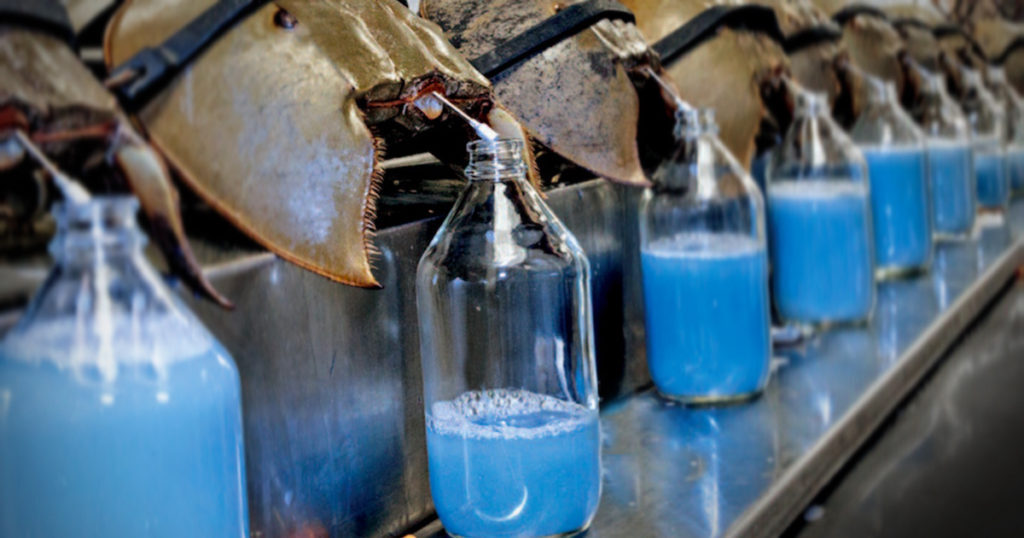While the U.S. Food and Drug Administration (FDA) continues to require drug sponsors to test new drugs and vaccines for safety and efficacy in animals, pharmaceutical companies increasingly recognize that the government is putting them in a straitjacket. The reality is, 95 percent of drugs that enter human clinical trials fail because of lack of safety or efficacy, after testing safe in animals. This embarrassingly high fail rate needs revamping. In its place, private companies can use predictive, human-relevant non-animal test methods and adopt a more humane approach. This change will provide drug sponsors with more options for testing the safety and efficacy of drugs, improve clinical trial attrition rates, cut time to market in half, and substantially reduce R & D costs, cutting drug prices fivefold.
The Pharmaceutical Industry can rely on human biology and advance non-animal test methods.
While the FDA has been stuck in the early 20th-century paradigm for safety and efficacy testing, some pharmaceutical companies are breaking out of that archaic regulatory framework and working to incorporate these methods in their nonclinical testing programs. But there must be a bigger push by government and industry to accelerate the change. Here are a few examples of non-animal testing efforts by pharmaceutical companies:
- AstraZeneca is working with Emulate Inc. to work together on Organs-on-Chips technology to improve prediction of human safety and efficacy of drug candidates.
- F Hoffman La-Roche (Roche) is using Emulate’s Human Emulation System across research and development programs to enable more human-relevant studies that will lead to earlier and better prediction of human safety and efficacy in the drug discovery stage.
- Javelin Biotech has teamed up with Pfizer to develop “industry-leading” Organs-on-a-Chip pharmacokinetics platform to determine ADME (absorption, distribution, metabolism and excretion) of drug candidates.
While the efforts of some pharmaceutical companies are laudable, more of an effort needs to be made. What can pharmaceutical companies do to move to more humane drug development?
- In house efforts to develop and adopt non-animal test methods.
- Train staff in use of non-animal test methods.
- Use FDA approved non-animal test methods.
- Collaborate with companies developing non-animal test methods.
- Engage with government entities that evaluate and promote non-animal test methods (ICCVAM, EURL ECVAM).
- Track publications on the use of non-animal test methods used for safety and efficacy testing.
- Advocate/lobby to support regulatory change and adoption of non-animal test methods for regulatory submissions.
- Voice public support for regulatory change to include the use of non-animal test methods.
Vaccine Adjuvant Ingredients and Endotoxin Testing — Shortsighted, Unsustainable and Inhumane
Adjuvants are used in vaccine development to boost the human immune response. Squalene from shark livers is currently being used for some flu vaccines and COVID-19 investigational vaccines. While the CDC and FDA define squalene as being derived from plants or animals, shark squalene is being used by pharmaceutical companies for these adjuvants. According to the Shark Allies, up to 500,000 sharks have or will be killed for a single vaccine project. There are molecularly identical, sustainable, plant-based alternatives to shark squalene. Hundreds of millions of vaccine doses will be required, and using shark derived squalene means relying on a limited supply chain. Regulators don’t require the use of shark-based squalene, so this unnecessary waste of wildlife rests solely at the feet of the pharmaceutical industry. They must do better.
Pharmaceutical companies have also been pulling hundreds of thousands of horseshoe crabs from the ocean to “bleed” them for their blue blood and eventually toss them back into the ocean. Half of them don’t survive the handling, transport, and other forms of trauma. This practice, along with overharvesting of crabs for bait for fishing, has caused devastating effects to the marine ecosystems. Bass, flounder and other fish species have experienced steep declines. Declining and endangered species of shore birds rely on a dwindling supply of horseshoe crab eggs.
Horseshoe crab blood is used to conduct endotoxin safety testing for each batch of vaccine. The blood contains cells that can detect fever-causing contaminants. But are the ecological consequences of using horseshoe crab blood essential for testing vaccines? No. Recombinant factor C (rFC) is a synthetic alternative available and approved for use by the European Pharmacopeia. Unfortunately, the US Pharmacopeia (USP) has not included rFC on the list of acceptable tests. FDA guidance confirms rFC as a suitable alternative to horseshoe crab blood, but states that pharmaceutical companies must follow a burdensome, outdated validation process in the USP.
To advance humane and ecologically sustainable vaccine adjuvants and endotoxin testing, companies must opt for sustainably sourced non-animal ingredients in vaccine adjuvants. They would be forward-looking, humane-economy companies if they also advocate for the use of non-animal methods to test for quality/batch testing for endotoxins in finished drug products (i.e. recombinant factor C (rFC) instead of horseshoe crab blood).
The COVID-19 pandemic, which has triggered a race for life-saving vaccines, has thrown a spotlight on testing methods and ingredients for vaccines. It’s not been a pretty sight, with the process requiring animal testing even when there are superior, faster, cheaper, more reliable alternatives. And who would have thought we are killing sharks and horseshoe crabs for vaccines?
Modern medicine plays an essential role in human health, as much as ever. But we need not sacrifice so many animals in our critical race for life-saving vaccines. As a species, we have the know-how and creativity to shed these inhumane methods and usher in 21st century science that enables better health for people and non-human animals.
Tamara Drake is director of research and regulatory policy for the Center for a Humane Economy.
